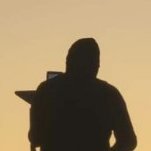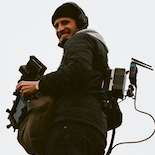-
Posts
3,723 -
Joined
-
Last visited
Profile Information
-
Occupation
Other
-
Location
London
-
My Gear
Steenbeck ST1600
Contact Methods
-
Website URL
https://londonsteenbeck.eu5.org/
Recent Profile Visitors
-
Georg Thoma. Bolex set up a new factory to make it. http://www.lusznat.de/cms1/index.php/kinomuseum-muenchen/die-entstehung-der-bolex-16-pro He later got a technical Oscar for the Sachtler fluid head.
-

Why is underexposed film so milky?
Mark Dunn replied to silvan schnelli's topic in Film Stocks & Processing
The shadows are "milky", as you put it, because by underexposing you have reduced the shadow density to such an extent that at a given print exposure you can't make the blacks dense enough without making the highlights too dark. Push processing would help a bit but at the expense of grain and definition. In black and white stills photography you would correct this by using a more contrasty paper, but you don't have this option in film- you can't control the contrast shot-by-shot. So you avoid underexposure at all costs. In digital, of course, you adjust the contrast in post. -
Quite so, 25 years on there's no reason other than custom for a DSLR still to look like a camera that needs two film chambers. But it's still a handy place to put the handgrip. Think Hasselblad. That sort of looks like a camcorder. I mean the 500C- their current stuff has gone back to the rangefinder shape.
-
Is anyone else shooting their home movies on 35mm? Don't think so. More power to you.
-

Cassavetes "Husbands" film stock?
Mark Dunn replied to Rodrigo Menck's topic in Film Stocks & Processing
There was only one Kodak neg stock in 1970, 5254. It's my understanding that Gevaert and Fuji stocks were rarely used in the US.- 7 replies
-
- cassavetes
- kemper
-
(and 2 more)
Tagged with:
-
On my monitor these look quite 40s Technicolor.
- 13 replies
-
- color grade
-
(and 1 more)
Tagged with:
-
I think there's a contributor here working at a co-op in France that still uses a Debrie printer with subtractive filters. Can't recall his name but you could try a search. But I don't think you could possibly tell just from a print how the light had been filtered to make the exposure. The print stock can't tell the difference. Brian Pritchard's website may help you http://www.brianpritchard.com/FAOL/contents/2604200faol/Foncd/TEXTS/sect_7/analy7.html
- 13 replies
-
- color grade
-
(and 1 more)
Tagged with:
-
I have never seen a Minima so this isn't from experience. The flexible spools are integral to the design. AFAICS the spool flanges are actually driven by the sprocket edges, and they are spread apart slightly at the feed and take-up points, then bend back flat to maintain the light seal. So the entire film transport depends on the size and flexibility of the spool flanges. There's no way to make it work with metal spools. Effectively it make the camera reliant on proprietary "software". It needed a thriving 16mm infrastructure, which no longer exists, and relied on a special item from another manufacturer, and that manufacturer's willingness to support it, also gone.
-
deleted
-
Sony had another go at the pellicle for their later Alpha stills line, calling it SLT for "translucent", before it jumped on the mirrorless bandwagon. It works very well. I've had an A55/A58 since 2016. Sensor dust is almost a thing of the past. Only drawback- it doesn't work in pinhole mode because the super-high DoF extends right back to the pellicle and sees every bit of the surface like a microscope. It's like photographing through measles.
-
The shutter speeds are proportional. From that table, at 64pps it would be a quarter of the speed at 16, so 1/140th. Also from the table, the shutter angle is evidently 165 degrees, so working back, the shutterspeed is the usual formula s = 1/((360/165)r), where s is the shutter speed and r the frame rate.
-
Mark Dunn started following "Ripley" lens ID?
-
From a discussion in a stills forum, it was suggested that this was a Primo or a rehoused Summicron. I think Primos are black. What does the team think? https://www.facebook.com/photo?fbid=843649821125782&set=pcb.843649931125771
-

State of the Forum Ads, and respect for the community
Mark Dunn replied to Aleksander Haugdal's topic in General Discussion
I don't get the sidebar ads at all on this or any site. Just 2 or 3 banners- top, middle and bottom. Maybe you need to check your adblocker. Firefox/Chrome. I'm no expert, but you may be getting the Norwegian ads because of your cookie settings. I very much doubt Tim is making his fortune from the ads, just helping out his costs. The usefulness of this forum far outweighs any ad problem. I tune them out anyway as I'm not in the market. -

Don't scan your films backwards!
Mark Dunn replied to Daniel D. Teoli Jr.'s topic in Post Production
I have two entire 3-400' rolls of junk film harvested from lab leaders from the 90s. Some of them are pretty good fragments of comopt prints in various languages. On shows they're great for running on the Steenbeck when the image is going to be replaced by a plate anyway. Some are pretty entertaining as well. One has Michael Eisner, Gerald Ford and Henry Kissinger- I've never tracked down the show.










